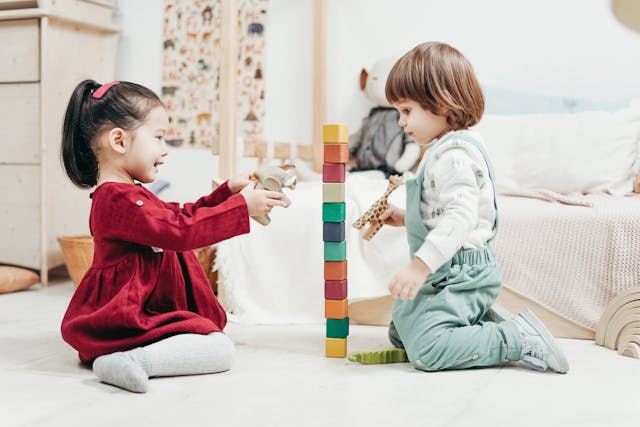Don’t you find it truly rewarding to watch your children play freely in a space you’ve thoughtfully put together? A space where scraped knees and toppled toy boxes aren’t a regular event. But safety doesn’t always come with the playset or the beanbags—it comes with you looking out for the details most people don’t think about until something goes sideways.

Start with Where They’ll Play Most
If your kids are like most kids, they’ll be darting in and out of the house with half the toy collection trailing behind them. Indoors, pick a place that’s snug but not cramped. Living room corners or unused dining spaces tend to be good spots. If you have rugs, make sure they have good traction—sliding around in a pretend dragon chase is not fun. Keep the outlet covers on the outlets, the blind cords tied back, and the wobbly chairs anchored.
Outdoors is all about open movement with safety hidden within. A small patio or a full yard is all the same: the surface is the thing to consider first. Softer grass, play sand, or rubber mat surfaces all beat out concrete when there is bound to be a tumble.
Keep Sightlines Clear
It doesn’t matter if your kid is five months or five—you just want to be able to see them. If toys are stacked up too high, or the playhouse door obstructs your line of sight from the kitchen window, it’s time for a reorganization. It’s not about watching them all the time but about knowing they are safe. A play space that’s within sight enables you to enjoy your coffee in peace without running out every five minutes to check on silence (which, let’s face it, is never a good thing).
Choose Smarter Storage
You don’t have to have Pinterest-perfect cubbies to stay organized. Large baskets for stuffed animals, lidded bins for building blocks, and wall shelves for books get the job done. Steer clear of toy boxes with lids that weigh a ton—young fingers work quickly, but aren’t invincible.
In addition, switch toys every few weeks. It not only keeps things novel and exciting but ensures you notice wear and tear you might otherwise miss.
Check for Stability and Surprises
If you have wooden structures in your play area—a swing set or even a climbing frame indoors—you should check them more closely. Bolts should be snug, wood should be even-smoothed out, and all should feel sturdy. Children are amazingly resilient when they make up their minds, and if it wobbles when you nudge it forward, it’ll likely collapse when they climb on it.
It is time to consider what might be hiding as well. Wooden buildings, particularly the outdoor ones, tend to attract unwelcome visitors. A little check every now and then can enable you to get an early warning of wear and tear or infestations. Sometimes, termite control might become necessary, particularly if the framework is beginning to weaken or you notice the classic little tunnels. It’s not all about splinters with play equipment anymore.
Let Them Help
Your kid is the ideal person for this project. Talk with them about what they enjoy playing with. Whatever it is, provide them with a space of their own that they feel belongs to them. Their input into the design (even if it’s simply putting a finger on a color or the rug) ensures they will enjoy it more and respect it more. Safety is not the opposite of fun; it’s the basis on which fun is possible.